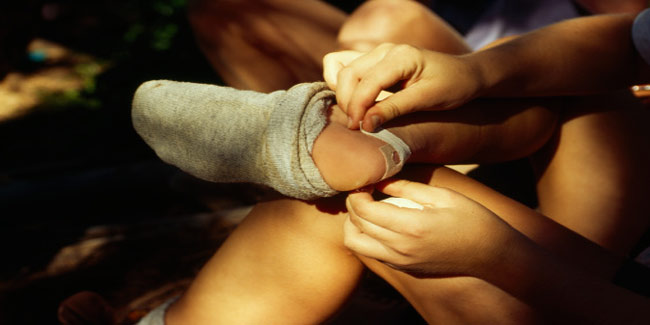
Blisters are small pocket of fluid that forms in the upper layers of the skin and is usually formed when the outer layer of the skin has been damaged.
Fluid gets collected under the damaged skin, thus cushioning the tissue which lies underneath. The fluid and the blister protect the tissue from any further damage and allow it to heal. Usually, it is best to leave blisters alone. Because blisters protect the underlying skin, breaking blisters open can increase the chance of infection. The truth is that most blisters heal naturally and do not need any medical attention, but in certain cases things could be different. Here we will show you how to use get your blisters treated according to the type of blister you are experiencing. 
Treating blisters according to their types:
Table of Content:-
Friction Blisters
You must remember that the unbroken skin which is present over a blister is important as it provides a natural barrier to the infection, and therefore this skin should remain intact if you wish to avoid an infection. Remember you should never pierce a blister with any sharp object as this will only cause infection and slow down the healing process.
You should cover the small blisters with a plaster, and those larger ones should be covered with a gauze pad or dressing that can be taped. Now you can experience blisters that have high chances of bursting, like that on the sole of your foot. This should be covered with a soft dressing that would act like a cushion. Change the dressing daily and wash your hands before you touch the blister to avoid infection. You will find that the liquid in the blister will get reabsorbed on its own and the skin will go back to its position.
Burst Blisters
When your blister has burst you should just let it be. Never peel off the dead skin on top of the blister, and allow the fluid inside to drain and then cover the blister and the area around it with a dry, sterile dressing.
You could opt for Hydrocolloid dressings that are available in pharmacies.
When the top layer of dead skin has been rubbed off then you should just let the remaining skin at the edges be. You should not wear shoes if this blister is on your foot, as it was probably a shoe that caused it.
Blood Blisters
The blood blisters should be completely out of bounds, never touch them and let them heal naturally. If your blood blister happens to burst then you should keep the area clean and dry. Always protect it with a sterile dressing so as to avoid infection.
You should keep in mind that blood blisters are often painful and by applying an ice pack on the area immediately after the injury could help your case.
The golden rule with blisters is that if a blister breaks, wash the area with soap and water, then apply a bandage. If a blister is very large or painful, your doctor may drain it and apply an antibacterial cream to prevent infection.
Image Courtesy: gettyimages.in
Read more articles on Skin Conditions.
Read Next
What is the treatment for Blisters?
How we keep this article up to date:
We work with experts and keep a close eye on the latest in health and wellness. Whenever there is a new research or helpful information, we update our articles with accurate and useful advice.
Current Version